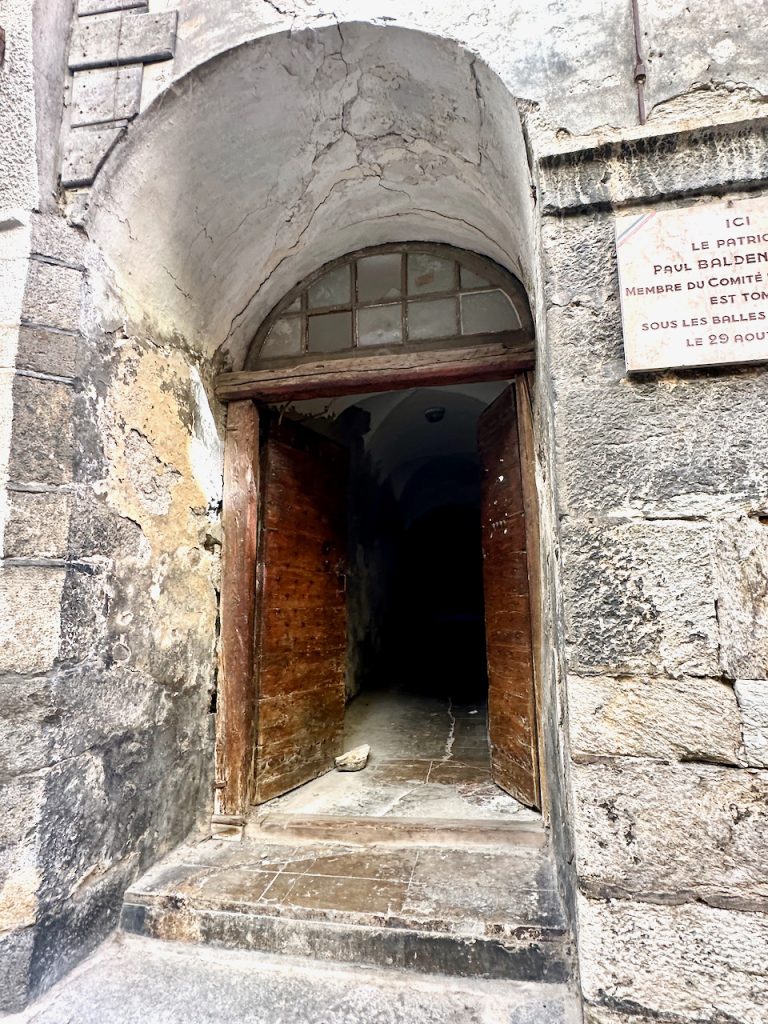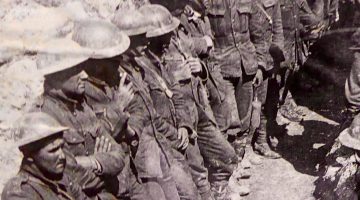Standing proudly on the hill above Briançon is its’ historic city, Cité Vauban. Named after its’ designer, Sébastien Le Prestre de Vauban (1633-1707) a celebrated architect and military engineer for King Louis XIV, Cité Vauban is now a UNESCO World Heritage site. Vauban created fortresses all around the borders of France, sometimes also designing towns within them, as well as various bastions and other military structures.
Vauban’s fortresses were distinctive in design using their location’s geographical features to create the best defense. Similar to the fortress at Cité Vauban, many of them had a distinctive star shape in their bastions, walls, ditches and/or moats: the pointed corners allowing complete visibility of any possible intruders.

The fortifications here are detailed and spread over several levels. Their many protruding parts meant those protecting the fortress had many angles from which to fire from and gave them good control over the trenches, which were directly exposed to cannon fire. There was no water in the trenches so the soldiers were able to reach good forward defense positions.

The views were extensive and from a defense perspective it is easy to understand why this location for Cité Vauban was chosen.

We proceeded past this building towards the city’s gates

We entered the city through le Porte de Pignerol,

and proceeded under the archway and through the portcullis, a heavy, vertically closing gate typical of medieval fortifications.

Collegiate Church of Notre-Dame-et-Saint-Nicolas
The spire of the Collegiate Church of Notre-Dame-et-Saint-Nicolas dominates the ramparts of Cité Vauban, both from outside the city and inside. The church had strong links to the Catholic, King Louis XIV and the important military presence in the town in the 17th and 18th centuries.

Briançon’s original, 12th century church was located outside the city walls on the road to Grenoble. During the construction of the ramparts that medieval church had been destroyed. In 1700 the people of Briançon had appealed to King Louis XIV for a new church to be built within the walls to replace the old one. Plans were drawn up by the engineer Isaac Robelin. They were reviewed and corrected by Vauban, work began in 1703 and was completed in 1718.

From the top of the main street of the old city, Rue Grande Gargouille, the shops and restaurants of the city unfurled like a colorful ribbon down the hillside.


Part way down Rue Grande Gargouille we noticed this door way, marked as a memorial site to an important French Resistance Member, Paul Baldenberger, who was killed here by the Nazis on 29th August 1944.
Baldenberger had belonged to the internal resistance: the FFI (Francs Tireurs et Partisans Français). The liberation of Provence in 1944 began when the Allies landed near Saint-Tropez, on August 15, 1944. Gap was liberated on August 18 1944 and Grenoble on August 22nd. On the 29th August, as president of the Liberation Committee, Baldenberger welcomed the Americans into Briançon and was taking part in a march with them and the FFI to celebrate the liberation of the city when he was shot. Briançon was recaptured by the Germans and many hostages taken prisoner.
It was a sobering moment reflecting on World War II, relative recent history compared to when the fort had been constructed centuries earlier.

We left through the city gates, not knowing that the following day more significant and surprising wartime stories were waiting for us to discover in this beautiful part of Provence.





No Comment